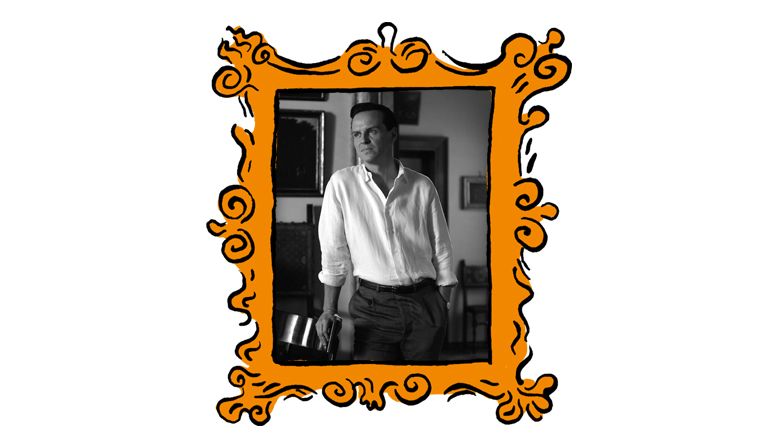I’ve seen some people complaining that the new Netflix series Ripley—Steve Zaillian’s slow-burn adaptation of Patricia Highsmith’s 1955 novel The Talented Mr Ripley—is dour and dull; a poor comparison to the Technicolor glitz of Anthony Minghella’s 1999 movie of the same source material. But I beg to differ.
Set in the 1950s, as per Highsmith’s original novel, Minghella’s film is a 1990s classic in every other way, headed up by a trio of the era’s hottest and most beautiful movie stars: Jude Law as Dickie Greenleaf, the American playboy haemorrhaging his father’s money in Italy; Gwyneth Paltrow his doting girlfriend Marge; and Matt Damon as the titular Tom Ripley—liar, forger and sociopath par excellence. The film also boasts a small but scene-stealing performance from Philip Seymour Hoffman and a nice turn by Cate Blanchett. Leaning into the allure of its sun-drenched, glittering European setting, it gave the carefree, prosperous fin-de-siècle audience what it craved: a modern, sophisticated return to classic Hollywood glamour.
Zaillian’s vision, by contrast, is more suited to our current time of precarity, threat and turmoil. Gone are the more obviously flashy elements of expat life; it’s not them, but the rich artistic and cultural history of Italy that lures Ripley (Andrew Scott) in. Highsmith’s creation is the perennial outsider. Passing himself off as Dickie grants him the sense of belonging that’s otherwise out of his reach. A man without his own history, he reinvents himself over and over; the beautiful objets d’art with which he surrounds himself are his only ballast, tethers in place of family, background and personal history. (Fitting, then, that one should make for an impromptu murder weapon!)
Shot entirely in black and white—in order, Zaillian has explained, to echo much of the cinema of the era—there’s a brooding, ominous and moodily claustrophobic quality to the mise en scène. Characters are often seen within makeshift frames: cocooned in the steep, enclosed staircases of Atrani, the seaside town where Ripley finds Dickie holed up; staged between doorways in apartments; walking down dark alleyways with tottering buildings towering above them on either side. Pause an episode at random and most of the freeze-frames could pass for photographs, they’re so fastidiously and elegantly composed: a series of tableaux showcasing architecture, frescos or other interior decor.
Zaillian’s Dickie (Johnny Flynn) and Marge (Dakota Fanning) are also suitably subdued. He has genuine artistic ambition (though sadly no talent), while Marge is more often found diligently plugging away at her book than sipping martinis or lazing around on the beach. Dickie’s tastes are clearly expensive, but they’re not overly ostentatious. Marge’s wardrobe, meanwhile, is more beatnik than glamour puss: loafers, cigarette pants and sweaters.
The show is portentous but languid. Baroque in its indulgent length—eight one-hour episodes—which allows Zaillian to take his time. There’s an extravagance to just how much screen time he dedicates to Ripley’s laborious disposal of bodies. And during that time there’s a harrowing attention to detail—the sheer amount of blood, the nausea-inducing thud, thud, thud of a corpse’s skull as Ripley thumps the body down flight after flight of marble stairs—but also hilarity. The murders committed here are the criminal’s maiden voyage, remember, so we forgive him his occasional bumbling moments. Indeed, they bring a blackly comic realism to the entire endeavour.
Even at the show’s less fraught points, whole stretches pass without any dialogue. We’re simply watching Ripley pack and unpack his bags in the various hotel rooms he flees between, type letters, or try on his quarry’s clothes. The camera’s omnipresent gaze, and with it our own, is juxtaposed with the characters’ many blind spots. In Zaillian’s hands, Highsmith’s tale becomes a story explicitly about seeing and not seeing things, and the tension between the two. Ripley, after all, is a master of disguise who operates, for the most part, in brazen plain sight.
There’s the policeman who idly fiddles with the photographs on Marge’s desk, photographs that we can see are of the real Dickie; if only he’d asked who the man in so many of them was. Also, the bloodstained towels in the bathroom of Ripley’s apartment, which he dumps there in haste the night before, after cleaning up an especially messy murder. A shot filmed from behind the bath, looking down the hallway, to where the policemen are nosing about by the front door, places the blood-smear on the porcelain front and centre for the viewer but out of sight to the characters. Again, if only they’d looked around the apartment more diligently.
But, really, the project succeeds or fails with the performance of Ripley himself. Alain Delon in René Clément’s Plein soleil (1960)—the first Ripley adaptation—brought a wonderfully French insouciance to the role, and Damon had his own charms, especially when he dropped his waspish façade and let the crazy out. And while I do have a lot of time for Der amerikanische Freund (1977)—Wim Wenders’s adaptation of Ripley’s Game, the third instalment in Highsmith’s Ripliad—a film that’s dark and weird in that wonderful 1970s way, Dennis Hopper seems entirely miscast as Ripley—something that Highsmith thought too; it made her furious. (And the less said about Roger Spottiswode’s truly dire Ripley Under Ground [2005] the better.)
Casting Scott in the role is a stroke of genius, though. He possesses a rare ability to switch between gormless naïf, blank-faced sociopath and sexy menace; which ensures that his performance is truer to Highsmith’s original creation than any other actor yet. The only Ripley who comes close is John Malkovich in Liliana Cavani’s Ripley’s Game (2002)—and one suspects that Zaillian is also an admirer as he has Malkovich make a cameo appearance here as Reeves, an elegant conman who recognises a kindred spirit in the younger antihero.
In one of the last scenes of the final episode, the older man provides his new friend with a fake passport under the name of Timothy Fanshaw, opening up the tantalising possibility of a second series…
‘Ripley’ does right by Ripley
The Netflix show may lack the colour and glamour of the Anthony Minghella adaptation—but that is partially the point
April 11, 2024









